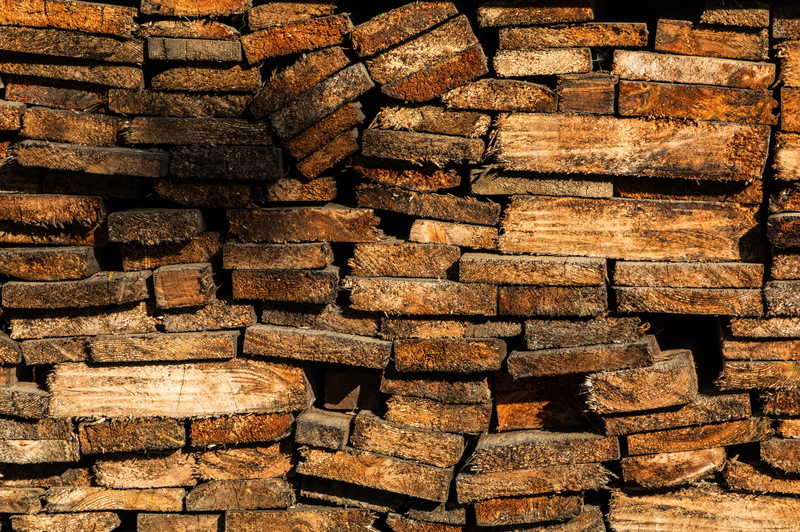There’s no need to fear mold. All you need is a perfect step-by-step guide on how to remove mold from rough cut wood.
Household mold can begin in one or two tiny patches. They are often not given that much attention since they’re deemed harmless.

Unfortunately, experts will agree that these invading spores can cause health issues. Be proud and be surprised with this simple hack, as you can make the cleaning solutions yourself!
Talk about saving a lot of pennies to prevent health risks. Removing molds is one thing, but killing mold permanently is an absolute relief.
What Is Rough Cut Wood?
Most probably, you are educated by what lumber is, which rough cut wood is derived from. Rough-cut wood is also known as rough sawn wood. It is relatively cheaper than most types of wood because it is untreated.
In interior design, it is used for its rustic and country ambiance. On the other hand, contractors use it to support beams, given their stiff nature.
Rough cut wood is cut into planks, and because it is uncured, they carry a lot of moisture. It means it is susceptible to molds and mildew.
Fighting Different Mold Types
As researched by the Environmental Protection Agency, medical professionals face a new challenge with SBS or Sick Building Syndrome. Studies in Europe found out that people spend 90% of their time indoors. The concentration of airborne pollutants indoors manifests in deteriorating health.
One of the reasons is mold infestation. Although this may seem like a minor inconvenience, mold presence is unhealthy, especially to infants and the elderly. Here is some indoor mold to look out for:
- Cladosporium – It is the most common mold both found in outdoor and indoor environments. Allergic reactions are triggered because their mycotoxins are more prominent. It thrives on vegetation and moist wood.
- Penicillium – It is often found in decaying materials such as fruits and vegetables. It has a greenish appearance and has a powdery texture. Health symptoms include headache, itch, and watery eyes.
- Stachybotrys – You can learn how to identify black molds immediately. This type of mold is known to be toxic. It can cause breathing difficulties and flu-like symptoms.
Key Steps To Rescue Wood From Mold
Step #1. Put on protective clothing
It is cool to be called a neat freak sometimes when your only concern is safety. Put on protective clothing against stubborn air particles that might make you ill. A simple N-95 medical face mask, pair of gloves, and eye goggles will do the job.
As the EPA suggests, homeowners should know how to prevent health repercussions by taking care of themselves. Mold spores are microscopic, and it is dangerous if accidentally inhaled.
If the molds are surprisingly hard to quantify, there’s no harm in wearing Tyvek suits. An old long-sleeved shirt and a pair of dainty pants are just not enough.
Step #2. Inspect the area
Most mold-inspection companies will tell you to consult their services, but you won’t need one right away. If you see visible signs of mold, the next step is to get rid of it.
If you still feel doubtful about the mold context, here are some situations that you should further inspect the wood.
- Musty smell you cannot locate
- Allergic reactions
- Low air quality
You can always contact a professional to be positive if mold is present in your home.
Step #3. Vacuum the mold-infested parts
We vacuum our rooms to keep them clean. Dust and grime build-up is no stranger to your home, so you proceed to eliminate it. Out of sight, out of mind, right?
This goes the same for mold infestations. A respectable doctor named Dr. Daniel Bernazzani explains that a specific vacuum cleaner should be used.
HEPA or High Efficiency Particulate Air-filtered vacuums are the best for mold remediation tasks. This type of filter can reportedly purge up to 99.97% of dust particles, pollen, bacteria, and mold.
Step #4. Choose the right cleaning agent
Mold-killing agents contain bleach. Luckily, most homes have household bleach they use for laundry. Fair warning, though, do not mix bleach with ammonia.
This mixture is toxic and can pose serious health concerns. Instead, mix a bucket of water and one cup of bleach. Stir well until combined.
Get a cleaning brush and dip in the solution. Brush the rough-cut wood well until the mold is not visible anymore.
Another cleaning aid you should try is pure white distilled vinegar. Kindly put it in a spray bottle and spritz it directly to the wood. Bacteria in the mold will disintegrate due to the acid.
Step #5. Sand it down
Make sure that the wood is dry before sanding it. In this step, the spores have already been eliminated. However, in some cases, mold is stubborn and cannot be destroyed by brushing.
Use 220-grit sandpaper and sand the wood down until the mold disappears. Sanding the wood will also put it in a better condition.
Prevent Molds From Coming Back
You can remove the mold before it starts reverting. Keep humidity levels in the home as low as possible.
Molds thrive in a warm environment. You can also clean the wood at least once a month so it does not accumulate grime again.
Conclusion
Remediating rough cut wood from molds is a hefty task. If you follow the steps above, you can have a safe and allergen-free home. We hope you were educated on how to remove mold from rough cut wood!
